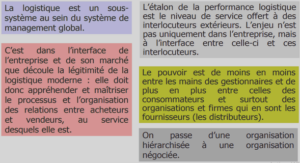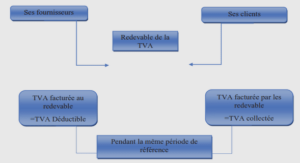Several regions in Canada are seismically active. The most active region is western Canada such as the coastal area of British Columbia including Victoria and Vancouver, and to a lesser extent, the eastern Canada such as the region from the St. Lawrence River Valley to the Ottawa Valley including Quebec City, Montreal and Ottawa.
The largest earthquake in eastern North America in the last 50 years struck Quebec on November 25, 1988 with a moment magnitude of 5.9. This earthquake, referred to as the Saguenay earthquake, did point out the tremendous impact of the failure of the NSCs of buildings and economic losses upon life safety. In this event, a great majority of the injuries, property damage and economic loss was caused by the failure of NSCs in buildings while very little structural damage was observed (Foo & Cheung, 2004).
In 1995, National Building Code of Canada (NBC) expressed the force modification factor, R in the minimum lateral seismic force at the base of the structure to design and detail the building components for different levels of ductility. This factor reflected the capability of a structure to dissipate energy through inelastic behaviour. The values of R ranged from 1.0 for very brittle systems to 4.0 for the most ductile systems. Each value of R factor must be used only in conjunction with the corresponding design and detailing requirements of a structural system, and design level of ground motion. In the 2005 to 2015 editions of the NBC, two force modification factors, Rd and Ro are proposed in the base shear equation for seismic design (Mitchell et al., 2003), where Rd is the ductility-related factor and Ro is the overstrength-related factor. Consequently, the reinforced concrete moment-resisting frame buildings can be designed according to NBC 2015 as ductile (D), moderately ductile (MD) or conventional construction (CC).
On the other hand, the proposed equation in all editions of NBC to determine the seismic design forces on NSCs considers their supporting structure as elastic and ignores the impact of force modification factors of the building. Thus, evaluating the NSCs acceleration demands in terms of height factor (Ax) and the component amplification factor (Ar) in inelastic buildings is a very essential research need.
Recent studies have shown that the building ductility affects the NSC response expressed in terms of the height factor, Ax, and the shape and peak values of floor response spectra (FRS) (Chaudhuri & Villaverde, 2008; Medina et al., 2006; Miranda & Taghavi, 2009; Oropeza et al., 2010; Petrone et al., 2015; Shooshtari, Saatcioglu, Naumoski, & Foo, 2010; Sullivan, Calvi, & Nascimbene, 2013; Surana et al., 2016, 2017; Vukobratović & Fajfar, 2017; Wieser et al., 2011). In fact, if an earthquake event induces inelastic response in the supporting structure, the component response reduces. Several methods were proposed to consider the benefit of building nonlinearity in reducing NSC demands in terms of Ax and FRS (Fathali & Lizundia, 2011; Medina et al., 2006; Petrone et al., 2015; Shooshtari et al., 2010; Surana et al., 2016; Wieser et al., 2013). These methods proposed the distribution of Ax factor along the building height as a function of the relative height, the ground motion intensity, and the period of the supporting structure. As for FRS, proposed methods were in general amplification functions to generate the FRS from the ground response spectrum (GRS) or the uniform hazard spectra (UHS). However, these methods either consider the shaking intensity of the study location as a surrogate of building ductility; thus ignoring the corresponding building design and detailing requirements for each ductility level or are limited to one level of building ductility. On the other hand, simplified methods were recently suggested to carry out nonlinear static analysis (pushover) together with linear time history analysis to generate inelastic FRS (Jha et al., 2017; Kothari et al., 2017). The method proposed by Kothari et al (2017) was derived for a conventional RC frame with three stories, and was not evaluated for other levels of ductility nor different number of stories. In addition to the aforementioned methods, a new equation was proposed in the document NIST GCR 18-917-43 (2018) to determine the seismic design forces for NSCs attached to inelastic buildings. This equation considers that the building ductility only affects the Ax factor.
The current study aims to investigate the influence of different levels of building ductility on seismic demands expressed in terms of Ax, Ar, and FRS of light acceleration-sensitive NSCs. For this purpose, a 6-story regular reinforced concrete frame office building assumed to be located in Montreal and Vancouver was used in this project. The building was designed according to requirements stated by CSA A23.3 (2014a)14 as ductile and conventional construction in Vancouver, moderately ductile and conventional construction in Montreal. Ground motion records with probability of exceedance of 2 and 10% per 50 years were selected and scaled to be compatible with the uniform hazard spectra (UHS) of Montreal and Vancouver. Linear and nonlinear dynamic analyses were performed to compute the elastic and inelastic NSCs seismic demands in the four mentioned case studies using SAP2000® software (CSI, 2019). In addition, this project is interested in evaluating the most recent simplified method available in the literature (Kothari et al., 2017) as well as the new equation proposed in NIST GCR 18-917-43 (2018) to evaluate the aforementioned seismic demands of NSCs.
The importance of NSCs seismic design
Proper seismic design of NSCs is important for several reasons. First, the failure of NSCs can cause injuries or deaths. For instance, the failure of cladding panels in precast buildings was the main cause of fatalities in the 2012 Emilia earthquake in north Italy (Magliulo et al., 2014). Second, the cost of NSCs represents the largest portion of construction cost in facilities such as hospitals, offices and hotels .
The economic costs resulting from damage to NSCs include not only the physical repair work, but also downtime cost when the damage affects the building occupancy. For example, the damage of NSCs in Santiago airport during 2010 Maule, Chile Earthquake (Mw 8.8) led airline companies to suffer US$10 million loss as a result of business interruption (Filiatrault & Sullivan, 2014). Finally, NSCs are very sensitive to ground motion shaking so low or moderate earthquakes, which cause very little structural damage, can lead to severe economic losses due to NSCs damage or failure. For example, the 1988 Saguenay earthquake (Mw 5.9) that struck Quebec, Canada caused very little structural damage while a great majority of the properties damage and economic loss was caused by the failure of NSCs in buildings (Foo & Cheung, 2004; Mitchell et al., 1990).
Approaches to estimate the seismic demands of NSCs
The seismic force demands of NSCs can be determined by four approaches summarized as follows:
1) Simplified formulas suggested by current code provisions such as NBC (2015), CSA S832 (2014b), ASCE 7-16 (2016), ASCE 41-17 (2017), Eurocode 8 (2004), and NIST GCR 18- 917-43 (2018). These simplified formulas are based on equivalent static methods that are usually applied in the current design practice for ordinary and industrial structures and serve as convenient means when no or just little information about the NSCs and the supporting structure are available at the design phase.
2) Simplified formulas enhanced by refined determination of peak floor accelerations (PFA) by means of modal superposition methods available in ASCE 7-16 (2016) and ASCE 41- 17 (2017), and require knowing the building dynamic properties.
3) Decoupled time history analyses also known as floor response spectrum method. They are usually used when dealing with critical facilities such as nuclear power plants (ASCE 4- 98, 2000; CSA N289.3-10, 2010). In these methods, only the supporting structure is modelled, so they are recommended for light components where the dynamic interaction between supporting structure and NSCs is neglected.
4) Coupled time history analyses where the supporting structure and NSCs are modelled as an integral part. Although this approach gives accurate responses of NSCs, it is not widely used because it involves several difficulties such as large differences between supporting structure characteristics (mass and stiffness) and that of NSCs, and large number of degrees-of-freedom in a combined system (Chen & Soong, 1988).
INTRODUCTION |






